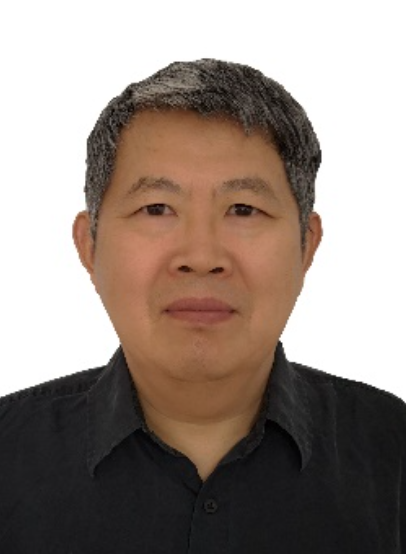
黄克谨,男,工学博士,教授,博士生导师。1986年毕业于浙江大学化学工程系化工自动化专业,同年考取浙江大学工业控制研究所(现浙江大学信息科学与工程学院控制系)的硕士研究生,师从孙优贤院士,从事化工过程模型化、控制与优化的研究。由于成绩优异,1989年被推荐直接攻读博士学位,1992年毕业后留校担任助教工作,1994年晋升为副研究员。1995年2月接受日本京都大学名誉教授高松武一郎先生的邀请,到日本关西大学做访问教授,协助高松武一郎先生进行日本通商产业省新能源开发机构的新阳光计划中的一个子课题—内部热偶合蒸馏塔的研究与开发工作。之后,又到日本木村化工机械株式会社年受聘于日本国立产业技术综合研究所,作为项目的主要研究人员进行内部热偶合蒸馏塔的综合与分析、系统的最优设计,以及控制系统的开发与评价等的系统性的研究工作。内部热偶合蒸馏塔已于2005年在日本丸善石化株式会社内长期连续运行并获得了成功,在世界上首次实现了蒸馏塔的无回流操作。根据被分离混合物性质的不同,节能效果可以高达30%-60%以上。2001至2006年,作为主要研究人员参加了日本科学技术振兴机构的战略创造研究项目:“
排出二氧化碳的物质和能源的併产系统”的研究工作,提出了该类系统的设计与控制的基本原理,即共谐最大原理(Maximization of synergy between mass production and energy production systems)。并通过反应蒸馏塔证实了这一原理的正确性。现在的主要研究方向包括:基于物质偶合、能量偶合以及系统强化技术的节能型化工过程的综合与设计、复杂工业过程的模型化、控制及优化等。已在国内外重要学术刊物上就常规蒸馏塔、内部热偶合蒸馏塔以及反应蒸馏塔的综合与设计、过程模型化、控制与优化等问题发表了100余篇。
教学课程Teaching courses
课程名称 | 面向对象 |
过程控制工程(Process Control Engineering) | 大学生 |
过程设计、控制与优化(Process Design,Control and Optimization) | 大学生 |
系统辨识与建模(System Identification and Modeling) | 研究生 |
主要科研项目Research Projects
项目名称 | 项目来源 |
利用外部环流强化反应蒸馏塔的设计与控制 | 国家自然科学基金面上项目 |
反应隔离壁蒸馏塔:反应物过量系统的设计与控制 | 国家自然科学基金面上项目 |
蒸汽再压缩隔离壁蒸馏塔的综合、设计与控制 | 国家自然科学基金面上项目 |
[1] Chen, H., L. Zhang,K. Huang, Y. Yuan, J. Yu, and S. Wang; “Reactive Distillation Columns with Two Reactive Sections: Feed Splitting plus External Recycle,” Chemical Engineering and Processing: Process Intensification, 108, 189-196 (2016).
[2] Yu J., L. Shi, Y. Yuan, H. Chen, S. Wang, and K. Huang; “Thermally Coupled Reactive Distillation System for the Separations of Cyclohexene/Cyclohexane Mixtures,” Industrial & Engineering Chemistry Research, 55, 311–322 (2016).
[3] Zang, X., K. Huang, Y. Yuan, H. Chen, L. Zhang, S. Wang, and K. Wang; “Reactive Distillation Columns with Multiple Reactive Sections: A Case Study on the Disproportionation of Trichlorosilane to Silane,” Industrial & Engineering Chemistry Research, 56, 717–727 (2017).
[4] Cao, Y., K. Huang, Y. Yuan, H. Chen, L. Zhang, and S. Wang; “Dynamics and Control of Reactive Distillation Columns with Double Reactive Sections: Feed-Splitting Influences,” Industrial & Engineering Chemistry Research, 56, 8029–8040 (2017).
[5] Huang, K., Y. Yuan, X. Zang, H. Chen, L. Zhang, X. Qian, and S. Wang; “Controllability Evaluation for Reactive Distillation Columns with Multiple Reactive Sections Disproportionating Trichlorosilane to Silane,” Industrial & Engineering Chemistry Research, 57, 1102–1108 (2018).
[6] Qian, X., K. Huang, S. Jia, H. Chen, Y. Yuan, L. Zhang, and S. Wang; “Composition-Temperature Cascade Control of Dividing-Wall Distillation Columns by Combining Model Predictive and Proportional-Integral Controllers,” Industrial & Engineering Chemistry Research, 58, 4546-4559 (2019).
[7] Qian, X., K. Huang, H. Chen, Y. Yuan, L. Zhang, and S. Wang; “Intensifying Kaibel Dividing-Wall Column via Vapor Recompression Heat Pump,” Chemical Engineering Research and Design, 142, 195-203 (2019).
[8] Qian, X., K. Huang, S. Jia, H. Chen, Y. Yuan, L. Zhang, and S. Wang; “Composition/Temperature Cascade Control for a Kaibel Dividing-Wall Distillation Column by Combining PI Controllers and Model Predictive Control Integrated with Soft Sensor,” Computers and Chemical Engineering, 126, 292-303(2019).
[9] Qian, X., K. Huang, S. Jia, H. Chen, Y. Yuan, L. Zhang, and S. Wang; “Temperature Difference Control and Pressure-Compensated Temperature Difference Control for Four-Product Extended Petlyuk Dividing-Wall Columns,” Chemical Engineering Research and Design, 146, 263-276 (2019).
[10] Yuan, Y., K. Huang, H. Chen, X. Qian, L. Zang and L. Zhang; “Effective Derivation of Asymmetrical Temperature Control Schemes for Dividing-Wall Distillation Columns,” Industrial & Engineering Chemistry Research, 59, 2036–2048 (2020).